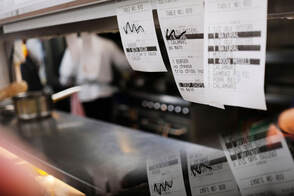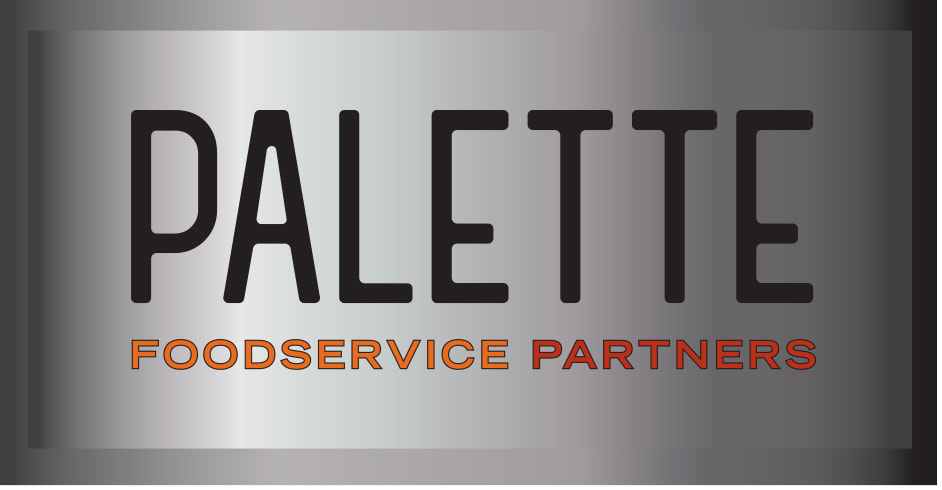 If you aren’t currently using tech tools to manage your team’s hours, profits are likely hiding in your schedule, since having even one extra person on a shift can make a noticeable impact on your bottom line. In addition to using data-based forecasts to determine ideal staffing levels, scheduling software has the positive ripple effect of reducing the time a new manager needs to spend overseeing staff scheduling and getting it right. This, in turn, demonstrates to staff that you care about maintaining an accurate schedule – so when staff are scheduled, they are needed, and when there are extra shifts available for people to pick up, that is made clear and it’s easy for them to take them on.  As any restaurant kitchen employee can tell you, preparing orders isn’t a linear process. Getting all meals in an order across the finish line closely together requires tasks to be prioritized, batched and sequenced. A kitchen display system (KDS) takes much of the mental work out of the equation, making kitchens operate more efficiently and helping to ensure menu items are at their best when they are presented to guests. As a recent Nation’s Restaurant News report explained, a robust KDS can help an employee prioritize the order of dishes needing to be prepared, alert the kitchen if a ticket is left unattended for too long, adjust the routing of tickets according to the time of day and anticipated guest traffic, and even pull menu items whose key ingredients have run out. Some systems can communicate with the guest directly to clarify an order or update them on its progress.  For smaller restaurants, building a tech stack may feel intimidating, considering the potential expense and their shortage of human resources as compared to major brands. But it doesn’t have to be overwhelming – particularly at a time when so many restaurant tech companies are emerging for restaurants of all sizes. Smaller operators can build their ideal tech stack by pin-pointing the top areas where they need support, then finding cloud-based solutions to provide it. For example, in a recent Nation’s Restaurant News report, Peter Baghdassarian, co-owner of Massis Kabob, a seven-unit Armenian kabob chain, said two of the key parts of his restaurant’s tech portfolio have been digital menu boards to help describe the menu and anticipate the many questions they would otherwise hear from guests (saving staff time), and leaning on partner Incentivio for building out and monitoring their loyalty app. The latter solution ensures Baghdassarian can leave the data analysis – a critical function for any restaurant – to people who specialize in it, while he can focus his time and money on serving guests well.  Employees who don’t feel heard aren’t apt to stick around for long. On the other hand, those who do feel heard – and who also believe they are being trusted with the information they need to do their jobs – are more likely to buy into the mission and values of their employer. Tech-based communication tools can help ensure everyone hears the messages they need to hear, when they need to hear them. They also provide your team with a repository for their comments, questions, criticisms and ideas. Meanwhile, they free up time for more senior staff and make sure everyone is hearing the same message. In your business, are you using your technology to keep everyone on the same page and prevent miscommunication?  SpotOn, the restaurant software and payments company, recently announced in its State of Restaurant Tech Report that the top challenges operators are facing in the next six months are rising costs, operational complexity and labor management – all challenges that consume many hours of an operator’s time. Labor management alone, according to the report, takes up more than 16 hours of a manager’s time each week. The time spent can be deceiving: An individual task like verifying staff clock-in may not take up much time on its own, but the hours add up. When you consider your top challenges in the coming months, do you know how much time you’re spending on what? Assess your biggest time eaters – and understand how much each task takes relative to others. There may be an easy tech-driven fix that can help you remove some of the burden from your staff and allow you to focus more time on tasks that drive business and cut costs.  As consumers have used digital channels more frequently to order restaurant food in recent years, many independent restaurants have been lagging with the mobile tech needed to facilitate those transactions. According to the June edition of the Digital Divide study, which included data from a PYMNTS survey of approximately 2,400 adults who regularly purchase food from restaurants, 56 percent of chain restaurants offer mobile order-ahead capabilities, compared with only 31 percent of independents. Low-cost tools to help eliminate the snags from the ordering process will become increasingly important. Fortunately, some companies are focusing on supporting independent restaurants’ tech transition to help level the playing field. ItsaCheckmate, for one, recently announced it would be launching an integration for small and medium-sized businesses that would enable direct ordering through Google’s search and maps functions.  Your business should allow you to collect a wide range of data about your restaurant, but more importantly, it needs to help you make connections between those disparate pieces of information, enabling you to make apples-to-apples comparisons across your locations. Looking at your business, are there processes that are either manual or are occurring in some locations but not others? Eliminating the loose ends will help you to see clearer patterns across such areas as employee and store performance, guest response to your promotions, and average check totals – and will empower you to make more informed conclusions across your business.  A new rule issued by the Federal Reserve brings consistency to how debit card transactions are processed online or in person – and it comes as welcome news to many restaurant operators that had to pivot to accommodate contactless payments over the course of the past two years. The rule requires debit card issuers to enable at least two unaffiliated networks to process all debit card transactions, including “card not present” (CNP) or online payments. CNP transactions have historically cost more for businesses to process than in-store payments. The National Restaurant Association believes that the shift to more unaffiliated networks could translate to less expensive swipe fees for CNP debit card transactions. Further, the rule will also incentivize card payment networks to improve their fraud-prevention capabilities and help operators identify theft and data breaches more readily. |
Subscribe to our newsletterArchives
July 2024
Categories
All
|



 RSS Feed
RSS Feed